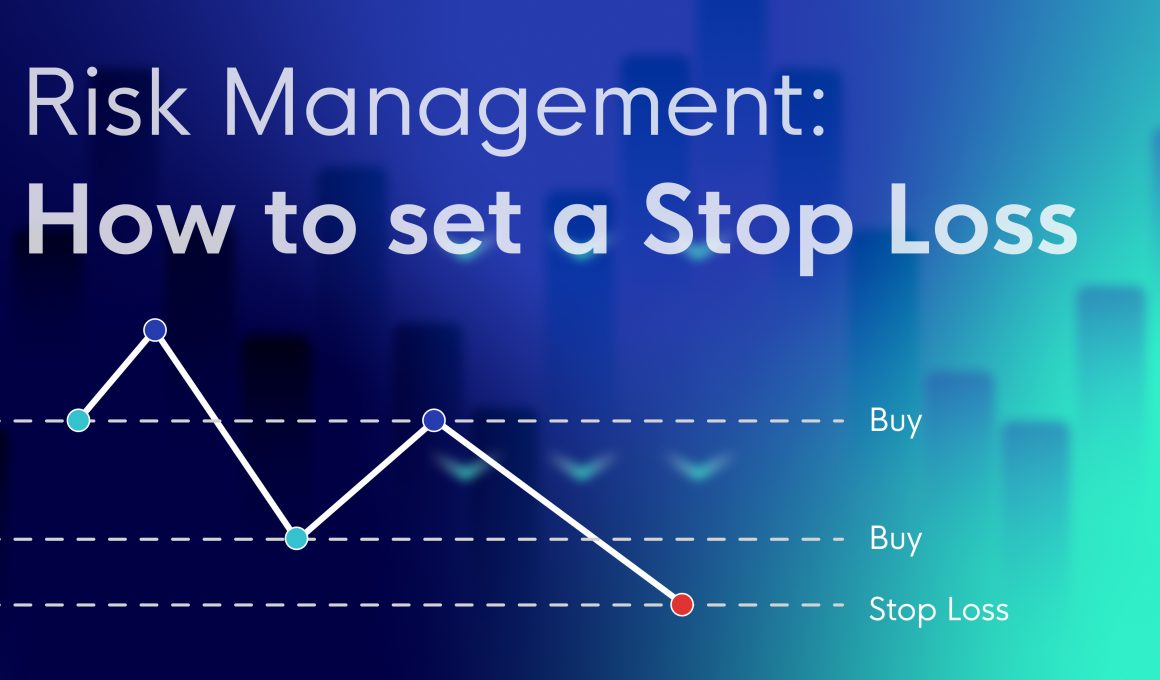“Set a stop loss!” is maybe the most repeated advice that new traders get and then ignore. Watching the number of liquidations reach 800,000 crypto traders in the May bloodbath is proof that traders in this market are not yet adopting this practice or thinking about risk management. This is where experienced traders from legacy markets like forex have them beat every time. Their longevity speaks for itself.
In the pursuit of long-term profitability, you need to become proactive in protecting your funds. We will once again repeat why stop loses are needed, what kinds exist and how to think about them correctly in the context of your trading system.
Why is everyone telling me to set a stop loss?
Even if you are not trading with leverage the opportunity cost of holding an underwater position while other projects are exploding is painful.
Your stop loss is often the real risk of your position. Without understanding or planning for it you’re trading in the blind not understanding your actual position size, nor how to set it.
Trading without a stop loss is testimony of a lacking trading system or strategy. It makes you easy prey to your emotions and mistakes like adding more to losing positions or aggressive revenge trading. If you have not even started on a trading strategy, you will need to start there.
One of the masters of trading psychology Mark Douglas speaks about fundamental truths in trading and keeps repeating the following: “Anything can happen.” If you truly take this perspective seriously you will not dream of opening a position without a safety. Sentiment in the markets changes by the hour and 20% candles are becoming frequent. Don’t fall victim to a false sense of security and lose your account.
But in bull markets things only go up?
If you started trading during a bull market, conditions will change and eventually “up only will be over.” Same for ranging or bear markets. Building an account can take years. Watching it go to 0 takes seconds.

The truth is that even if you have a 1000% gain on every trade 99 times out of a 100 and can get liquidated only 1 time out of a 100 all it takes that one time to wipe out your account. Having a losing position is fine. Closing it according to plan is great. If you are not willing to do this, a roulette table at a casino will be quicker than spending all this time on trading.
Buffet has often spoken about his Rule No. 1: “Never lose money.” The difference between investing and trading is that the latter does put you in a position to need to lose. How much and how often is key. Understanding how your losses add up and how much you have to make to get your account back is very sobering:
| Loss % | % to make to make it up |
| 10% | 11% |
| 20% | 25% |
| 50% | 100% |
| 80% | 400% |
At the end of the day people start learning about stop losses in one of 2 ways:
- Before they acutely start trading and risking their hard earn money
- After they’ve lost their account. Then lost it again. And again. Then they quit or if they are lucky enough to still have some capital and start trading with stop loses
Which one are you?
How close to the open should the stop loss be?
The distance of your stop loss will depend on your trading strategy and market. If you are trading a small altcoin that has daily volatility of 20% a 1% stop loss will probably close your position quickly. Whereas a stable forex pair like AUDUSD can be traded with the same stop loss for days.
There are two main ways to think about it:
- Tight stop loss – close to where the position is opened
Fewer winning positions, but also smaller losses.
- Loose stop loss – far from where the position is opened
More winning positions, but also larger losses.
Backtesting your strategy will give you a great idea of what’s better for you.
Types of Stop Losses on exchanges: market vs limit
Once you set out to actually set a stop loss your exchange or broker will typically greet you with 2 options: limit and market order stop losses. The differences are not big but in particular circumstances they can have massive implications. It’s important to understand them and decide what works for you:
- Limit orders: set a specific price and can be executed only at that price. Example: sell Bitcoin at $40,050.
This stop loss can be set off only if there’s a buyer at that price. Price can also reach this level, but if there are more people trying to sell at it, it might not trigger for you.
Limit orders tend to cost less than market orders as they are considered “market making.”
- Market orders: set to trigger when a certain price is reached, although the actual execution price may vary. Example: place an order when Bitcoin reaches $40,050.
The main difference is that when your asset reaches the price you’ve set as stop loss a market-based order will be placed, and you will sell 100%. If price is ruthlessly trending down, you may sell at $40,000 or even less. However, you can be certain that your order will be executed.
What you use is up to you and how likely is price to spend time at your stop loss level. If you want your stop loss to be activated every time, go with market.
Stop Limit orders
There can be even more niche categorization of limit orders as stop limit. These are conditional orders that use 2 prices: the stop price and the limit price. When the stop price is reached the limit, order is placed on the exchange. For example I want to buy Bitcoin but only after it attempts to break $40,000 and I believe it will dip a bit if there’s a rejection. So I will set the Stop Order at $40,000, with the Limit Order at $39,000 to take advantage of the possible rejection:

It can work for selling too. If I am afraid to lose profits I can set the stop and limit at a price that allows me to do so.
How to determine where to set stop loss
This will depend on your strategy. Some strategies have a close rule based on an indicator or market conditions: “I will sell when RSI reaches 95.” Others are based on percentages: “Will sell if market price drops 10% as I am not willing to take a bigger loss to see how this position plays out.” Again, backtesting is crucial to see what’s best. Otherwise, you’re guessing.
Going through the most popular approaches will make your options very clear:
1. Stop loss based on price invalidation
With this approach, you are hoping that price will break through, or sustain itself above/a certain level. If it does the opposite direction, you have a set loss you are willing to accept. It’s tied to support and resistance levels.
At the moment EURUSD on the 4-hour chart appears to be rejected from a resistance at the 1.2220 area, so it might be a good moment for a short to the 1.2180 area:

Source: TradingView
In this case we may be looking to set our stop loss slightly above the area to where price rallied some hours ago as we know that it may have the strength to push up but not sustain itself. This leaves us with 0.29% to our target and our stop loss 0.13% away which is more than a 2:1 risk to reward ratio.
2. Stop loss based on Moving Averages or other indicators
Moving averages are often used to determine if the trend is continuing or not. Moreover, a lot of traders are watching them and reacting which makes them a good indicator to use for your stop loss level.
AAVE was on a tear in the beginning of 2021 reaching $550+ with rapid speed. Many traders used the 200 MA on the 1-hour chart to estimate if the trend is ongoing. Indeed, after reaching $581 we see it retracing. The sharpest drop to $380 came after AAVE lost the 200 MA:

Source: TradingView
A stop loss at the 200 MA would have us out at close to $500 avoiding a large drawdown.
Depending on the timeframe you can use VWAP, and all sorts of moving averages to the same purpose.
3. Fixed strategy-based stop loss
You can run a trading that has an open condition and then a stop loss and take profit. It’s something you can develop though backtesting and may require a change when market conditions change, to make sure the strategy is still effective.
For example, an Ethereum strategy on the 1h timeframe where we open a position every time RSI is above 50 with a stop loss at 5% and take profit at 15% of market price. So, we close the position every time the take profit or stop loss is reached. Tested on 24 Feb 2020 – 24 Feb 2021 this strategy brings a +278.23% return with no leverage:

To consistently execute this strategy, you need to have done your solid testing on it.
4. Trailing stop loss
This dynamic way of setting stop losses follows price. If you set a 5% trailing stop loss and price keeps going up, the stop loss moves up with price. It can be very useful in bull markets or when the asset enters price discovery and traders don’t have known price levels to work with.
This detailed explanation on how a trailing stop loss works, will get you up to seed quickly.
Not many exchanges feature this option, but you can do it on all exchanges we support through CLEO.one.
How to execute your stop loss
1. Manually
You will sometimes see traders doing this, watching price and manually clicking when the level is reached. This is fine if you are an intraday trader that spends time watching all the trading pairs you have open positions on and don’t leave open positions over night.
However, when things start moving violently, particularly in crypto you will often not have time to react, and your stop loss might turn into a loss much greater than planned.
2. Automatic stop loss
This is the more conventional way these safeties are implemented. To echo Douglas again, if you truly believe everything might happen in the markets at any time you will not have a reason not to set a stop loss.
Exchanges vary through what they offer. For example, Binance features a few different types of stop loss, but you can’t set it as trailing. Experienced traders from long-standing markets usually use a platform through which they can do it all on different exchanges and brokers.
In CLEO.one you can set simultaneous take profit and stop loss, use their trailing variants, close positions based on indicators, and set position sizes with a lot of flexibility. If you are trading multiple pairs and have to use a few exchanges centralisation can make things much easier.
Either way we recommend having an automatic stop loss. Not because of what you are expecting to happen, but because of all the scenarios you cannot imagine.
How to set a Stop Loss: Conclusion
The question about using a stop loss is not a preference but connected to your acceptance of the unpredictability of markets. There are a few choices any new trader needs to make like what kind of order types to use or what to use as the basis for the stop loss and how to execute it. Whatever they determine as best, the use of stop loss will ensure their longevity in the markets.
Backtesting what works best with your trading strategy is the greatest way to gain confidence and avoid executional mistakes in the future.
If you’d like to implement any of the approaches noted in this article or backtest them on crypto, forex or equities, head to CLEO.one to instantly gain access to all this data in a user-friendly way. You can even automate your trading strategies on Binance, Bitpanda Pro, or HITBtc for completely free.







